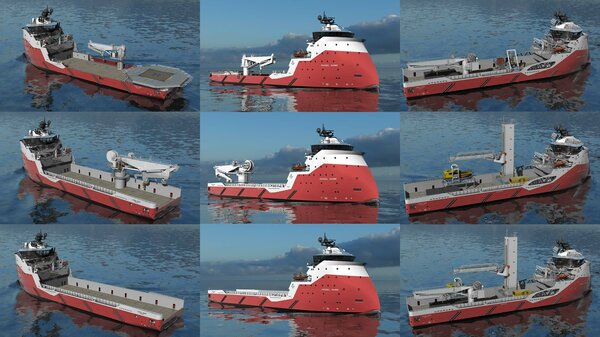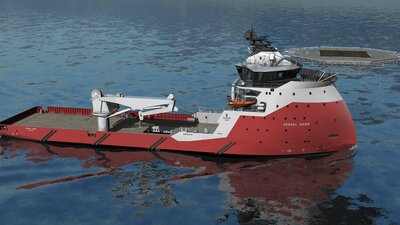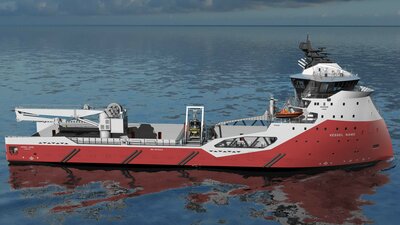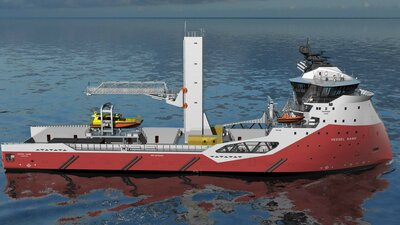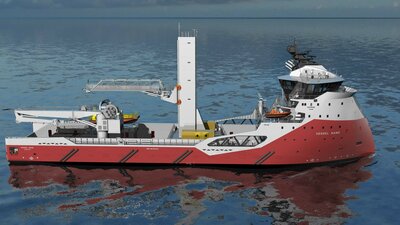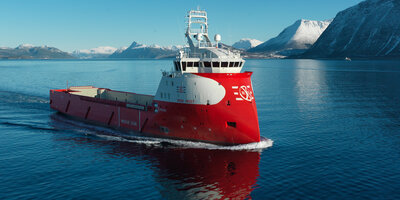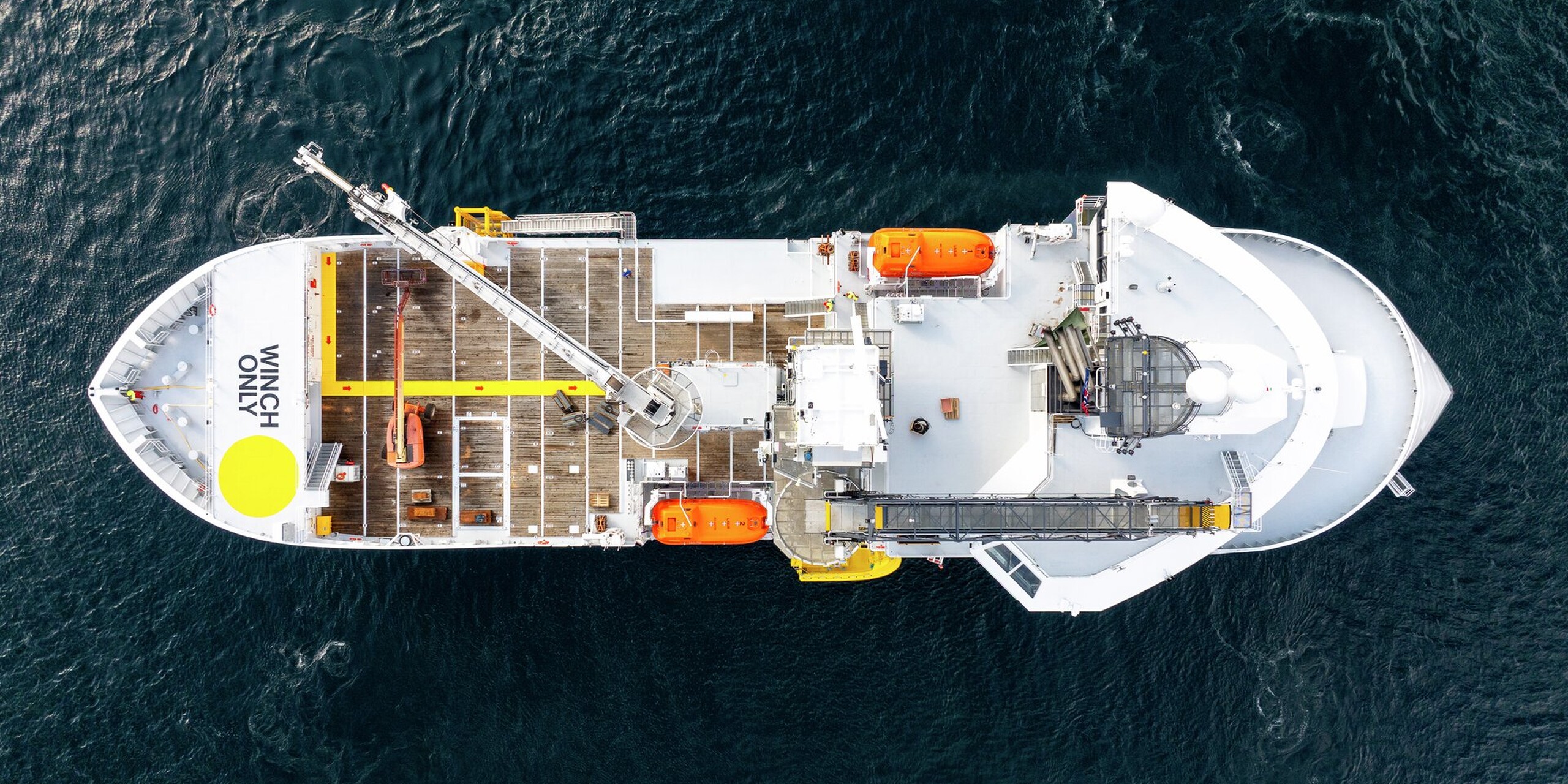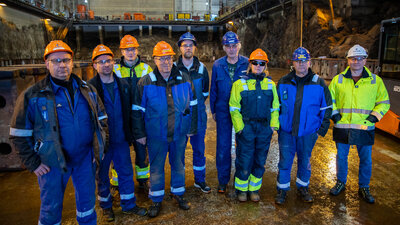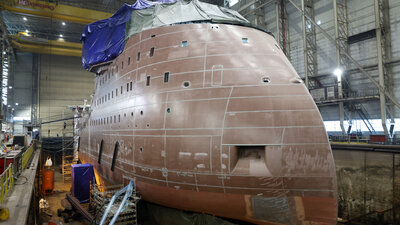Reliability in unpredictable markets
The maritime industry is changing rapidly, and the demand for efficient energy support vessels is at an all-time high. These vessels play a crucial role in oil & gas and renewable energy operations, enabling the safe completion of complex tasks in challenging environments. The ULSTEIN PX120 is a standout example of innovation in this field. A vessel which combines advanced technology with practical use. Its hybrid propulsion system, the unique ULSTEIN X-BOW hull design, and configurations with various features enable ship owners to exploit its potential in multiple configurations, from supply service and light subsea operations to walk-to-work (W2W) and other offshore support operations. The PX120 is set to navigate uncertainty with flexibility.
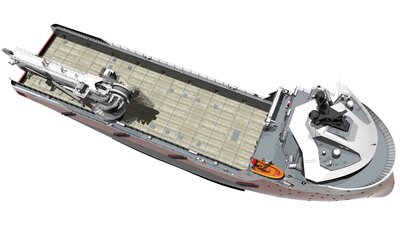
Challenges in offshore operations
Working offshore comes with many challenges. Bad weather, such as high waves, strong currents and winds, can disrupt operations and pose significant risks. There is a strong need for versatile and efficient vessels that can perform various tasks while reducing downtime. High operational costs and fuel use strain budgets, making cost-effective solutions necessary. It is also crucial to ensure the safety of the crew and equipment in these demanding conditions.

When flexibility is key
To ensure effective cross-over market capabilities, it is essential to integrate flexibility and agility from the early design phase. Ulstein has conducted a thorough study of the complete lifecycle operations of offshore installations, identifying common characteristics and functionalities that can be effectively combined. This approach leads to developing concepts capable of performing a wide range of tasks across energy markets, including walk-to-work (W2W) operations, subsea tasks, and inspection, maintenance, and repair (IMR) activities.
Typically, these vessels have offshore cranes, remotely operated vehicles (ROVs), W2W gangways, spacious working decks, and large and comfortable accommodation areas. By working closely with our clients, we customise the ideal combination of functions to meet the specific needs of each project.
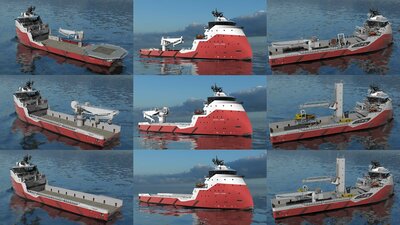
Benefits and features of the ULSTEIN PX120
The ULSTEIN PX120 is an adaptable platform that strikes a perfect balance between efficiency and functionality. Measuring just under 90 metres in length and 20 metres in width, the PX120 can accommodate between 60 to 100 people on board, making it well-suited for a variety of topside configurations. Its dimensions, combined with the innovative X-BOW hull design, ensure both stability and fuel efficiency. Designed with active roll reduction systems, the PX120 boasts excellent seakeeping capabilities, allowing for reliable operations even in harsh weather conditions.
Not only does the PX120 serve as a dedicated workhorse for platform supply tasks, but it also offers the versatility of a Swiss Army knife, adapting seamlessly to various topside arrangements of your choosing.
Some of the available options:
- Offshore support operations equipped with a crane, helideck, and ample deck space for additional equipment.
- Subsea operations supported by a crane, ROV capabilities, and a moonpool, as needed.
- Platform supply operations featuring a spacious deck for dry cargo and a substantial volume for liquid cargo hold below deck.
- Offshore wind operations that include walk-to-work gangways, along with warehouse and logistics facilities to ensure efficient transfers of personnel and equipment.
What about fit-for-purpose vessels?
Fit-for-purpose vessels are designed to meet specific operational needs with precision and efficiency. They are equipped with specialised features and technologies tailored to particular tasks, ensuring optimal performance. We would argue that vessels like ULSTEIN SX164 or ULSTEIN SX222 are better equipped for subsea or walk-to-work operations, respectively.
When deciding between fit-for-purpose vessels and flexible solutions like the ULSTEIN PX120, the specific operational needs, cost implications, and long-term strategic goals must be considered.
Here are some key points to guide your decision:
- Operational needs: Assess the specific requirements of your operations. If tasks are highly specialised and critical, fit-for-purpose vessels might be the best choice. For varied and less specialised tasks, flexible vessels could offer better value.
- Cost-benefit analysis: Evaluate the long-term costs and benefits of each option. Consider factors like maintenance, operational efficiency, and potential downtime.
- Future-proofing: Consider future operational needs and market conditions. Flexible vessels can adapt to changing demands, while fit-for-purpose vessels ensure optimal performance for specific tasks.
We can help find the right choice for your business case. A decision should be based on a thorough analysis of operational requirements, cost implications, and long-term strategic goals. By carefully evaluating these factors, you can make informed decisions that balance efficiency, flexibility, and cost-effectiveness.
Are you ready to discuss your next project?
Offshore energy operations
Explore some of our vessel designs below or visit all vessel designs for the energy market.

Platform supply
Our platform supply vessel range includes smaller to medium-sized PSV vessels and larger multipurpose PSVs. These vessels are specialized for efficient supply and support operations worldwide. The flexibility of the design makes them well suited for conversions into new segments in case of market changes.

Subsea
Our subsea portfolio includes flexible designs for Offshore Construction, Well Intervention, Inspection/Maintenance/Repair (IMR), Subsea Umbilicals, Risers and Flowlines (SURF) and rock installation vessels.

CSOV & SOV
A trusted partner for shipowners and operators empowering the construction, maintenance, and operation of offshore wind farms and oil and gas facilities.
